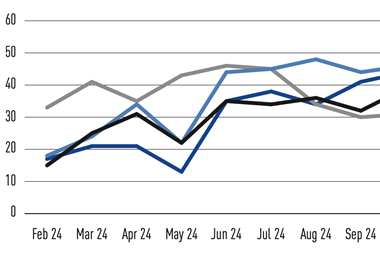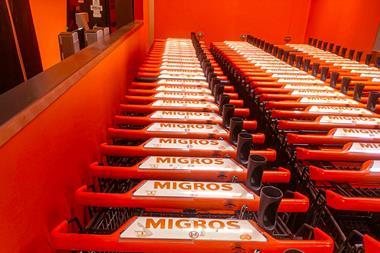Estonia’s second pillar, privately managed pension system finally made the statute books last October, ending months of debate on the extent of compulsion, if any, in a country that prides itself on its economic liberalism. Eventually the scheme became mandatory only for those now aged under 18, making it the most voluntary in the region.
The scheme is also the least exclusive as it is open to those up to the age of 60; in most other second-pillar programmes, workers above a certain age – 50 in the case of Latvia – are not eligible. However, older workers in Estonia have to make their decision quickly: the cut-off date for the 51-to 60-year olds is 1 June, 1 November for those between 46 and 50, and 1 November 2003 for those aged 42–45. Sign-up for all participants starts this April, and from July participants will be able to choose their fund.
The working estimate is that between 15% and 25% of the 630,000 workforce will sign up, yielding around 6bn Estonian kroons (EEK – e380m) in assets under mangement by 2005, but that could prove an underestimate. “Our visits to companies indicate that some 75% of employees are ready to sign up,” observes Loit Linnupold, CEO of Uhispank Asset Management Company. For prospective managers, the risk is that an underestimate of likely members will still leave them with the administrative costs of running the funds. For the government, the more members join up, the higher the cost to the budget. The main incentive for members, who pay 2% of their gross salary into the second pillar, is that the government matches their contribution with a further 4% out of the first pillar contributions. For Estonia employee contributions are a new feature: up till now contributions to the state benefits system have been funded by a social tax solely levied on employers, with 20% earmarked for pensions. Pension benefits will, however, be taxed. Other features of the scheme include full inheritability, and joint ownership of pension funds by spouses.
Estonian pension fund members will also be among the best protected in the region, following parliament’s amendments this February to the deposit guarantee legislation. The new guarantee fund, which comes into effect in July, protects bank deposit, investment fund and pension fund clients against fund losses caused by management rule breaches or insolvency of the fund management company. Funds themselves, unlike pension management companies, cannot merge, although expected changes in the investment fund law may allow this next year. “We have more flexibility than in other countries,” adds Veiko Tali, director of the finance ministry’s financial services department. Members can choose at the beginning of each year to start contributing to a new fund and, if they wish, transfer their existing accumulated assets.
While there is no minimum required return, as is the case in Poland, the management companies have an incentive to perform as they have to take a 1% stake in the fund itself. “Guarantees of stability are built into the system in other ways, through high requirements for diversification, the pension fund manager’s own mandatory share and a guarantee fund,” explains Paavo Pold, portfolio manager at Hansa Asset Management in Tallinn. The government has also drawn lessons from the second pillar launches in Hungary and Poland, and the high sums spent on agency networks and promotion, and capped front-end fees in the first three years at 3%.
At least six Estonian institutions are expected to apply for licences. Application is restricted to Estonian registered companies with investment management experience. The minimum share capital requirement is EEK30m (compared with EEK12m for second pillar funds), rising to EEK45m in five years’ time. Outsourcing in Estonia, although not prohibited, is impractical because under law employees of the pension fund management company are held solely responsible for the assets. They can, however, invest in other investment funds, including overseas registered vehicles.
All have to offer their members a choice of at least two funds, one of which avoids equities. Most fund managers hope to offer a conservative (largely fixed income) aimed at the older population, balanced (25% equities) and an aggressive fund with a higher equity component for younger workers with a longer investment horizon. Investment regulations for second pillar funds are liberal by regional standards (see box below). The most significant differences between the second and third pillar legislation here is that the former have a limit of 50% of asset value in equity investments, while the latter have none, and that the maximum limits on investments in a single security, at 5% of market value, is half that of third pillar funds. There are a few quantitative restrictions that fund managers would like eased, such as a 10% limit on non-currency risk derivatives. “This means that we will have to leave some risk unhedged,” complains Loit Linnupold.
Unlike a good number of other countries in the region, which capped overseas investment for its second-pillar funds, for instance to 15% in the case of Latvia and 5% in Poland, Estonian legislation has no overseas limit as long as the securities are investment grade (see box). In the case of the second pillar funds, the legislation enforces diversification by restricting total domestic investment to 70%. “It has been a pragmatic approach by our ministry of finance,” says Priit Poldoja, head of investment management at Hansabank in Tallinn. “If you restrict investment you put fund managers in the position where they cannot make the best decisions. The key issue is not to help the local capital markets. If there are enough good opportunities in Estonia, we’ll invest there.”
The Tallinn Stock Exchange (TSE) bucked the global trend in 2001, with the benchmark TALSE index rising by 5% over the year. The exchange has also linked up with Helsinki Exchanges Group, which last year took a controlling stake in TSE. Nevertheless, the exchange has suffered from delistings of former key stocks by strategic investors. “The key issue is that we don’t have that many listed companies that qualify as attractive for pension funds, nor do we have many fixed income opportunities,” adds Poldoja. The Estonian government cannot by law run a state budget deficit, so the government debt market is negligible. A few large companies such as Estonian Energy and Port of Tallinn have issued corporate bonds, but while Poldoja believes that second pillar legislation will make corporate debt issuance more attractive, Estonian pension fund managers currently have no choice but to buy most of their fixed income abroad.
The launch of the second pillar programme is expected to have a positive influence on the voluntary third-pillar funds, which have been up and running since 1999 when Hansabank, the country’s largest bank, launched the first programme. Since then Uhispank, the second largest bank, LHV Asset Management and Sampo have set up funds. The third pillar funds have to compete for the savings market with the more aggressive life insurance companies offering both traditional defined benefit and unit-linked policies. Third pillar assets at the end of 2001 stood at EEK35.5m against EEK700m in life insurance reserves. The total number of third pillar fund participants is around 2,000 against 30,000 holding life insurance retirement policies. “The private pensions tend to be bought by those on higher incomes,” notes Priit Poldoja.
Third pillar investors get a tax break on contributions of up to 15% of their gross salary, can start drawing on the pension at age 55 and pay 10% income tax on the benefit against the standard Estonian 26% flat rate. The government’s public relations campaign for the second pillar is set to raise general awareness of retirement planning and pensions as savings vehicles. According to Hansa Asset Management’s Pold, investing in all three pillars, and assuming a conservative return of 4% a year, could yield a pension with a generous salary replacement rate of 70%.












No comments yet